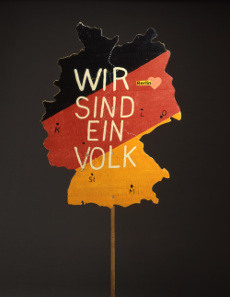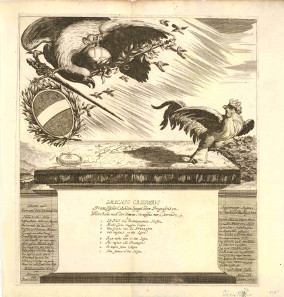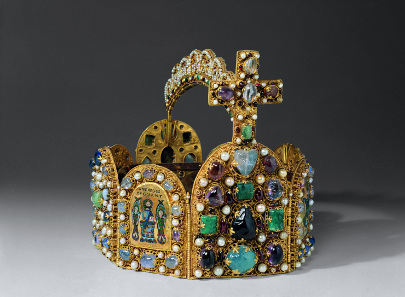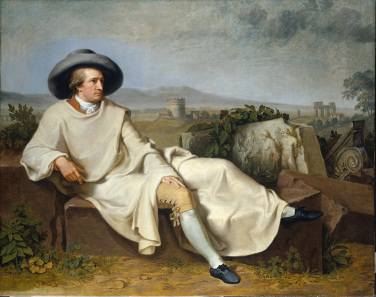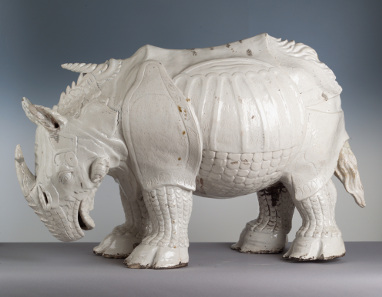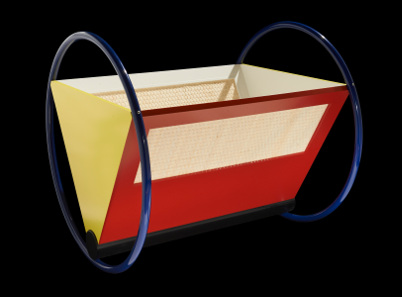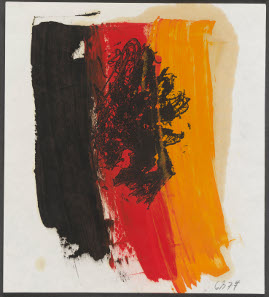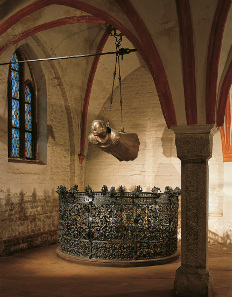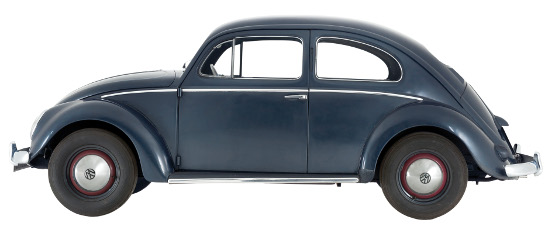October 30, 2014 – The British Museum has opened its new exhibition ‘Germany – Memories of a Nation’ running until 25 January 2015. The display features 200 objects and focuses on a key period of 600 years in Germany’s history, from the 15th century to the present day.
Berlin demonstration banner/placard, Germany 1989. © Deutsches Historisches Museum.
Modern Germany as we know it today was born 25 years ago with the fall of the Berlin Wall (9th November 1989). Since 1990 this new Germany has had to think about its relation to the history of East and West Germany and all the Germanies before that, the country’s identity has been shaped not only by modern history but by a rich narrative stretching back over the past 600 years.
Broadside on Occupation of Alsace. A broadside on the occupation of Alsace by the French, expressing hopes that the area will become German again, Anon. Print, c.1678. © The Trustees of the British Museum.
Throughout its history, Germany has been notable for internal political and religious complexity and loose and ever changing frontiers. Germany’s history is one of the most complex and important in Europe and has had a profound effect on the past, our present and future.
Reichskrone. Replica of Holy Roman Emperor’s Crown, lead, Germany, 1913. © Städtische Museen Aachen.
Sponsored by Betsy and Jack Ryan, Germany: memories of a nation features 200 objects selected to reflect on a number of key themes: floating frontiers; empire and nation; arts and achievement; crisis and memory. The result is necessarily impressionistic and focuses on a key period of 600 years, from the 15th century to the present day.
Johann Heinrich Wilhelm Tischbein (1751-1829), Goethe in der römischen Campagna (Goethe in the Roman Campagna). Oil on canvas, 1787. Städel Museum, Frankfurt am Main. © U. Edelmann, Städel Museum, ARTOTHEK.
Rare loans from venues across Germany are displayed, most of which have never been seen in the UK before. From the most famous and iconic portrait of any German in history, the huge portrait Goethe in der Campagna by Tischbein, generously lent by the Städel Museum in Frankfurt, to an early edition of Grimms Fairy tales, to a home-made banner from the demonstrations of late 1989 cut in the shape of a united Germany and carrying the inscription Wir sind ein Volk – ‘we are one people’, this exhibition tells diverse and fascinating stories through objects which embody the memories shared by all Germans. German cultural achievement cannot be overestimated, in the creation of objects of both beauty and purpose.
Gutenberg. Bible 061604: The opening page of the second volume, Parabole or Proverbs of the Gutenberg Bible. Mainz, 1455. © British Library Board.
The production of the Gutenberg Bible in the early 1450s marked the creation of modern Europe, the imperial cities of Nuremberg and Augsburg have been home to an enduring metalworking tradition. Germany’s contribution to printmaking and in particular the genius of Albrecht Dürer, the first great artist in a mass-produced medium, …
Porcelain rhinoceros based on Dürer’s print. Made by Johann Gottlieb Kirchner, Meissen factory, 1730. Porzellansammlung, Staatliche Kunstsammlungen Dresden. Photo: Herbert Jäger.
… the rediscovery of porcelain technique by the Meissen factory …
Cradle in the Bauhaus style. Photo: The Trustees of the British Museum.
… and the work of the Bauhaus changed the world and are witness to Germany’s enduring impact in the cultural world.
Adler linocut by Baselitz: Adler (Eagle), George Baselitz, 1977. Etching printed from perspex plate with oil on paper. Presented to the British Museum by Count Christian Duerckheim. Reproduced by permission of the artist. © Georg Baselitz.
The devastating and tragic events of the first half of the 20th century inevitably shape modern perceptions of German history and culture. The exhibition reflects these events through the works of witnessing artists and evocative objects of the time. Otto Dix prints reflect on World War I, banknotes issued during the period of hyper-inflation to financial crisis in the 1920s and works by Käthe Kollwitz’s memorialise of the political chaos that followed 1918. A loan from the Buchenwald concentration camp, the camp’s replica gate with its inscription in elegant Bauhaus lettering stating ‘to each his own’ is a powerful reminder of how established legal precepts can be utterly debased and flouted; a simple refugee cart is testimony to the largest organised deportation in history as Germans from across Europe were forced to return to the re-drawn borders of East and West Germany after 1945. When a once more divided Germany had to engage with this past and create a present that could accommodate it, a process that modern Germany continues.
Hovering Angel by Ernst Barlach. Güstrow Cathedral. © Archiv Ernst Barlach Stiftung Güstow (Foto: Uwe Seemann).
The end of the exhibition is dominated by the hovering figure of Ernst Barlach’s Der Schwebende, a mourning figure in solid bronze designed for Güstrow Cathedral initially as a memorial to those who died in World War I. Its subsequent fate has meant it has become a distillation of Germany’s 20th century history and a powerful symbol of the strength of reconciliation. It is being generously lent by the Evangelisch Lutherische Domgemeinde Güstrow for the first time.
1953 Volkswagen Beetle Export Type 1. National Motor Museum.
An accompanying radio series ‘Germany: Memories of a Nation’ on BBC Radio 4 is being broadcast. The series examines the key moments that have defined Germany’s past, its great, world-changing achievements and its devastating tragedies, and explore the profound influence that Germany’s history, culture and inventiveness have had across Europe. You can read an article on that topic here.
‘Germany: Memories of a Nation’ by Neil MacGregor will be published in hardback by Allen Lane on 6th November price: £25.00.
Follow updates on the exhibition via Twitter on #MemoriesOfANation and the Museum’s Twitter account @britishmuseum.
For general information on the exhibition go to the website of the British Museum.




